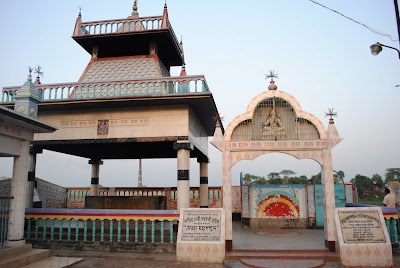I really lucked out...it turned out my trip to Bangladesh coincided with the Bengali NewYear on April 14th, otherwise known as Phela Baishakh. This holiday connects all ethnic groups in Bangladesh and is celebrated throughout the country.
The day started with a parade through the main street in Brahmanbaria. I marched with the school in the parade. Everyone dresses in red clothing and marches with colorful signs and traditional music. Following the parade, there were several street fairs with performances and vendors selling artisanal merchandise.
Many people wore traditional clothing:
There were performances of traditional street fighting:
In the afternoon, the school hosted a festival in my honor. The administrators, teachers, and students organized musical and dance performances. There was traditional dance and singing:
There was also modern dance:
And a few tributes to Michael Jackson:
I am so grateful to my host, Mustofa, and all of the teachers and students, who worked to put on this amazing show to introduce me to the culture of Bangladesh!






 Posted by
Posted by


















